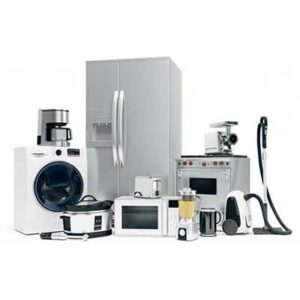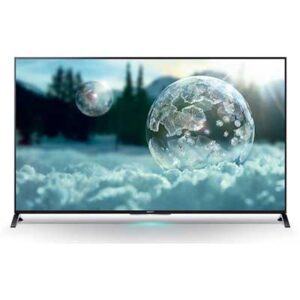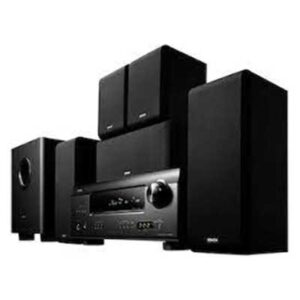How Much Electricity (kWh) Do 1.5 Ton AC Use? Leave a comment
When it comes to cooling our homes or companies, air conditioners have become a crucial appliance in many places of the world. However, with the rising worry about energy use and its impact on the environment, it’s crucial to understand how much electricity air conditioners consume.In this piece, we will explore the power consumption of 1.5 ton AC, offering you vital information to make informed judgements while balancing comfort and energy economy.
Understanding The Basics Of 1.5 Ton AC
Before going into the power consumption of 1.5 ton AC, it’s necessary to comprehend the fundamental workings of air conditioning systems.
Air conditioners operate by collecting heat from within rooms and delivering it outside, resulting in a cooler and more comfortable environment. They achieve this through a combination of cooling coils, refrigerant, compressors, and fans.
The Concept Of Cooling Capacity
Cooling capacity refers to the ability of an air conditioner to remove heat from a room. It is generally quantified in British Thermal Units (BTUs) or tons.
A ton of cooling capacity refers to the amount of heat that may be evacuated in one hour, equivalent to 12,000 BTUs per hour. Therefore, a 1.5 ton AC has a cooling capacity of 18,000 BTUs per hour.
Determining Energy Efficiency Of 1.5 Ton AC
Energy Efficiency Ratio (EER) is a crucial measure that assesses the efficiency of an air conditioner.
It is calculated by dividing the cooling capacity (in BTUs) by the power utilised (in watts). The bigger the EER, the more energy-efficient the AC unit is.
It is crucial to choose an air conditioner with a higher EER rating to lower energy use
Power Consumption Of A 1.5 Ton AC
The power consumption of a 1.5 ton AC could vary depending on several aspects, including the kind, energy efficiency, and usage patterns.
On average, a 1.5 ton AC requires roughly 1.5 to 2.0 kilowatts per hour (kWh). However, it’s crucial to understand that this is an estimated figure, and the actual power use may vary.
Factors Affecting Electricity Usage
Several factors affect the power utilisation of a 1.5 ton AC. Let’s analyse these things in detail:
Room Size And Insulation
The size of the room and its insulation have a vital effect in determining the power consumption of an air conditioner. Larger rooms need more cooling, resulting in greater energy usage.
Additionally, poorly insulated spaces permit cold air to escape, resulting in increased energy use as the AC works harder to maintain the optimum temperature.
Ambient Temperature
The ambient temperature of the room affects the energy use of the air conditioner. Cooling a room with a higher ambient temperature requires more energy compared to a room with a lower ambient temperature.
It is better to keep the doors and windows closed to prevent the infiltration of hot air from outside.
Thermostat Settings
The thermostat settings of the AC unit directly impact its power use. Lowering the temperature setting leads the air conditioner to work harder and consume more electricity.
Setting the thermostat to an optimal temperature may aid strike a balance between comfort and energy economy.
Frequency And Duration Of Use
The frequency and duration of AC usage greatly influence its overall power consumption. Continuous operation and prolonged use could lead to increasing energy expenses. It is important to use the AC judiciously and shut it off when not necessary.
Condition Of The 1.5 Ton AC Unit
The condition of the 1.5 ton AC unit itself has an impact on its power consumption. An older or improperly maintained device may consume more electricity than a newer and well-kept one. Regular maintenance and cleaning of the AC may aid boost its performance and reduce energy usage.
Maintenance And Cleaning
Proper maintenance and periodic cleaning of the air conditioner are vital for optimal performance and energy efficiency.
Dirty filters, clogged coils, or a lack of maintenance could limit the AC’s efficacy and increase power use. It is suggested to clean or replace filters periodically and schedule expert maintenance as necessary.
Calculating The Electricity Usage
To calculate the energy usage of a 1.5 ton AC, multiply its power consumption per hour (kWh) by the number of hours it works daily.
For example, if the AC consumes 1.8 kWh per hour and works for 8 hours, the day power usage would be 14.4 kWh. This algorithm may aid anticipate the energy usage and plan correctly.
Tips For Energy Efficiency 1.5 ton AC
To decrease power usage and boost energy efficiency with a 1.5 ton AC, consider adopting the following tips:
Optimal Thermostat Settings
Set the thermostat to an appropriate level that delivers comfort without excessive cooling. Each degree increase in the thermostat setting may lead to great energy savings.
Proper Insulation
Ensure that the room is suitably insulated to limit heat transfer. Proper insulation helps maintain the optimum temperature, decreasing the stress on the air conditioner.
Regular Maintenance
Schedule periodic maintenance of the AC unit to preserve it in optimal condition. Clean or replace filters, check for leaks, and ensure all components are performing effectively.
Alternative Cooling Solutions
Consider alternate cooling options, such as ceiling fans or natural air, to complement or replace the utilisation of the AC. These methods consume less electricity and may deliver comfort in moderate weather situations.
Environmental Impact And Sustainability
The power consumption of air conditioners contributes to the overall energy demand and carbon emissions. To lessen the environmental damage, it is necessary to choose energy-efficient AC models, employ them cautiously, and explore sustainable cooling ways.
Conclusion
Understanding the power consumption of a 1.5 ton AC is vital for making informed choices about cooling our rooms properly. roles like room size, insulation, thermostat settings, and maintenance play major roles in affecting electricity usage.
By adopting energy-efficient technologies and studying different cooling choices, we may strike a balance between comfort and environmental responsibility.












